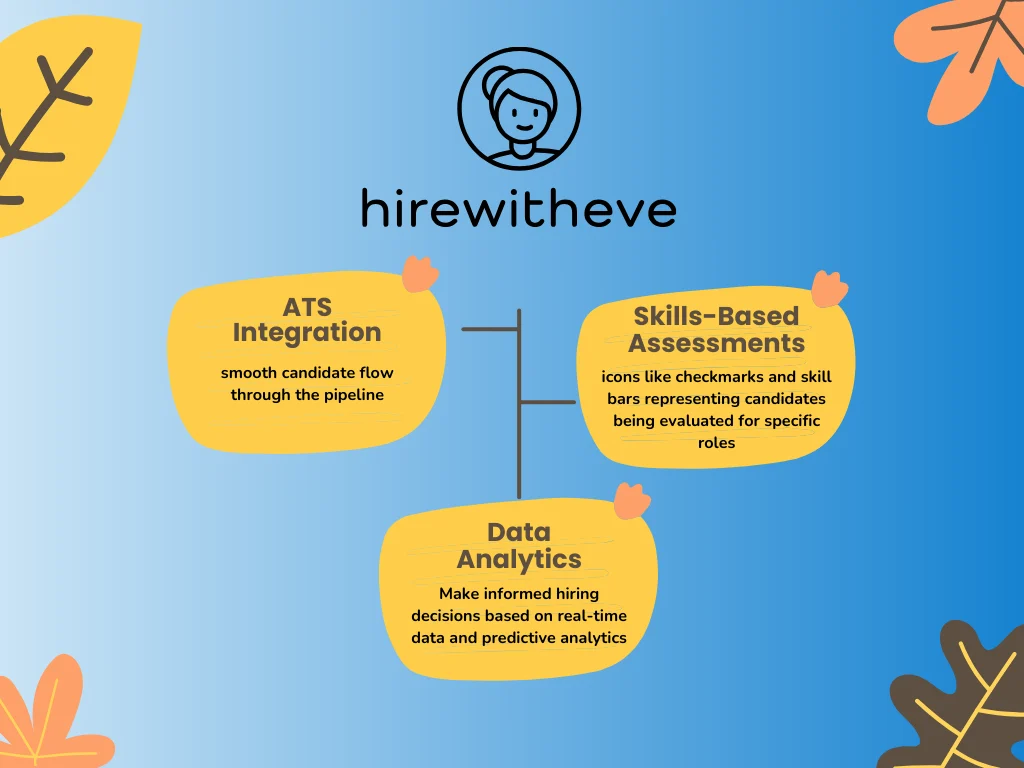Building an Effective Hiring Plan

Building an Effective Hiring Plan: A Guide for HR Managers and Talent Acquisition Specialists

In today's competitive job market, talent acquisition specialists and HR managers cannot afford to approach hiring without a well-thought-out plan. Consider the tourism industry: starting seasonal job postings only a month before the season begins would be disastrous. Why should any other industry be different? The foundation of successful hiring is a strategic hiring plan that aligns with company goals, ensures efficiency, and helps the company avoid costly mistakes.
A robust hiring plan involves more than just posting jobs online. It requires data-driven strategies and C-level buy-in to make sure that recruitment is aligned with the company's long-term vision.
Table of contents
What is a Hiring Plan?
Steps to Create a Hiring Plan That Works
Core Benefits of a Solid Hiring Plan
Common Pitfalls to Avoid in Creating a Hiring Plan
How HirewithEve Can Help Streamline Your Hiring Plan
Conclusion
What is a Hiring Plan?
At first glance, a hiring plan might appear to be just a spreadsheet outlining the budget and expected headcount. However, true hiring plans go far beyond numbers. They are strategic roadmaps for recruitment, outlining how many employees will be hired, when they will be hired, and the resources allocated for each hire.
Without a clear plan, organizations risk being reactive instead of proactive, which can result in rushed hires, inefficiencies, and high turnover rates. A hiring plan is a necessary tool to predict and prepare for future workforce needs, avoiding last-minute scrambles and helping to build a strong, capable team.
Steps to Create a Hiring Plan That Works
Gather Relevant Data About Your Current Hiring Process
Data is critical for creating a hiring plan that leads to successful outcomes. You need to know your time to hire, cost per hire, and the average headcount to make informed decisions. Collecting this data will provide you with a clear understanding of where your hiring process currently stands and where improvements are needed.
Determine Your Hiring Goals
Once the data is collected, the next step is to establish clear hiring goals. Does your organization have a high turnover? Is your time to hire longer than it should be? Identifying these gaps will inform your strategy.
Set a Realistic Timeline
Like any strategy, your hiring plan needs to be supported by a realistic timeline. This timeline should outline when you expect to fill each position and how long each step in the hiring process will take.
Formalize Your Hiring Plan with Job Requisitions
Formalizing your hiring plan through job requisitions ensures that each department's hiring needs are communicated and approved. Job requisitions provide a clear outline of the job role, the reason for the hire, and the associated budget.
Core Benefits of a Solid Hiring Plan
Aligning All Departments
A well-executed hiring plan aligns every department with the company's goals. When each team understands their hiring needs and timelines, it becomes easier to focus on long-term objectives.
Identifying Hiring Needs
A hiring plan allows you to identify the future hiring needs of your organization. Whether it’s predicting future turnover or planning for business growth, a good hiring plan sets clear goals for every department.
Planning and Tracking Your Budget
Budget planning and tracking are critical elements of a successful hiring plan. By understanding how much is spent on recruiting, HR managers can allocate resources more efficiently.
Structuring the Recruiter's Workload
Recruiters often face uneven workloads, with high-volume hiring periods followed by slower times. An annual hiring plan ensures that recruitment efforts are spread out, preventing burnout during busy seasons.
Common Pitfalls to Avoid in Creating a Hiring Plan
Despite the many benefits of a hiring plan, several common pitfalls can prevent success:
Poor data collection: Without accurate data on previous hiring efforts, your plan will be based on assumptions.
Inflexibility: A hiring plan should be adaptable. If it's too rigid, it will fail to accommodate the company’s evolving needs.
Lack of stakeholder alignment: Failure to involve leadership and department heads can result in a plan that lacks buy-in.
How HirewithEve Can Help Streamline Your Hiring Plan
HirewithEve offers a suite of features specifically designed to streamline your hiring plan and improve recruitment efficiency. Below are the actual features of the platform that align with creating a structured and effective hiring plan:
Comprehensive Applicant Tracking System (ATS) Integration: HirewithEve simplifies the tracking and managing of candidates throughout the hiring process. Its ATS allows HR managers to easily monitor where each candidate is in the pipeline, ensuring that no steps are missed and helping to reduce the time to hire.
Skills-Based Assessment Tools: One of the standout features of HirewithEve is its focus on skills-based hiring. The platform helps HR teams assess candidates based on the skills that matter most for each role. By incorporating skills assessments into your hiring plan, you can ensure that you are hiring the best fit for each position, aligning with long-term company goals.
Data Analytics for Hiring Insights: HirewithEve provides data analytics capabilities that allow you to gather insights into your hiring process. Whether it's tracking time to hire or analyzing cost per hire, the platform’s analytics help HR managers identify bottlenecks and areas of improvement, ensuring a data-driven approach to hiring.
For talent acquisition specialists and HR managers looking to build a successful, structured hiring plan, HirewithEve offers the perfect solution. Whether you're handling seasonal recruitment or planning for long-term growth, the platform’s tools will help streamline the process, reduce the time to hire, and maximize your hiring budget.

Conclusion
A well-structured hiring plan is key to ensuring your organization is prepared to meet its workforce needs. By gathering data, setting clear goals, and using advanced tools like those offered by HirewithEve, you can reduce hiring inefficiencies, save time and money, and create a more aligned and cohesive approach to talent acquisition.
Target Your Talent
Unlock tailored solutions for your recruitment and hiring needs with Eve Platform's extensive case study library.
Subscribe now to enhance your HR expertise and excel in your role.
Free Resources

Transforming Hiring: 7 Key Recruiting Metrics
Enhancing recruitment processes with data-driven insights for better hiring outcomes.

Reducing Hiring Bias with Hirewitheve.
Utilizing Hirewitheve to combat bias and streamline recruitment processes effectively.

Hiring Detail-Oriented Candidates
HirewithEve enhances hiring by accurately assessing candidate's attention to detail-oriented.
